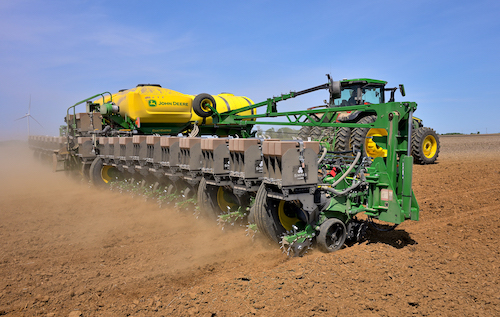Future Shock
Trolling around the Internet over this past weekend, I stumbled upon a fascinating Web site. Called Future Timeline, this site tracks expected global and galactic developments to come, looking at everything from the 2012 U.S. Presidential Election to the heat-death of the entire universe (some trillion years in the distant future).
Universal developments aside, what was really interesting about Future Timeline was how many of these anticipated issues tied to the world of agriculture. On the plus side, for instance, agricultural robots will start appearing in the nation’s crop fields and orchards later this decade. To quote the Web site: “Complex algorithms allow robotic workers to ‘learn’ the longer they are on the job, so they become more adept as time goes on. The advantages of this technology include much greater accuracy in spraying pesticides (cutting its use by 80%), uninterrupted output and, as technology improves, greater efficiency and speed.”
With these gains in output, agricultural robots are expected to increase overall food production. Along these lines, by the 2030s, the Web site predicts that tissue engineering will make it possible for producers to grow meat using single-cell animals instead of relying on livestock.
On the flipside of this, the site predicts that because of climate change and increasing droughts across the globe, current cash crops such as tobacco and cocoa (which is used to produce chocolate) may be available to only the very rich, with an individual candy bar costing upwards of $15!
Then there’s population growth. With the global population hitting 9 billion by 2045 and rising temperatures causing longer droughts and water shortages across parts of Asia, Africa and the southwestern U.S., many groups will be forced to abandon their homes and head to cooler climates during the late 2020s. “Kansas, Nebraska and other nearby states are now experiencing ‘dust bowl’ conditions even worse than those seen in the 1930s,” says the Web site. “This is having a considerable impact on agriculture and the economy, exacerbating the damage caused by higher fuel prices.”
Now to me, what’s really scary about some of these predictions is just how close they seem in terms of the real world. Sitting here at the tail end of 2011, does the world of 2020 seem that far away?
Luckily, I know several companies invested in agriculture are hard-at-work on new seed varieties and technologies that promise to address some of these expected needs. These include drought-resistant seeds (which should hit the market within the next few years) and better tracking systems to aid in precision agricultural practices.
And based upon what Future Timeline predicts, these developments can’t come a moment too soon . . .






